-
About
- About Listly
- Community & Support
- Howto
- Chrome Extension
- Bookmarklet
- WordPress Plugin
- Listly Premium
- Privacy
- Terms
- DMCA Copyright
- © 2010-2025 Boomy Labs


 DJ Rob
DJ Rob
Listly by DJ Rob
Bill Withers, born William Harrison Withers, Jr. on July 4, 1938, died on Monday, March 30, in Los Angeles, CA. He was 81.
In his lifetime, the laid back, smooth-voiced tenor had several huge hits and won three Grammys - all for Best R&B Song - in the 1970s and ‘80s. As a late bloomer in the music biz, Withers, who’d already spent nine years in the U.S. Navy before he pursued a professional career in recording, didn’t get his first chart hit until his 33rd birthday on July 4, 1971.
In all, Withers charted 24 songs on Billboard’s Hot R&B/Hip-Hop songs chart, with thirteen of those also reaching the pop chart - the Billboard Hot 100.
In tribute to the late legend, DJROBBLOG has put together what it considers Withers’ ten most compelling songs, along with the stories of what made them so.
There will never be another like Bill Withers, and more than anything, these ten songs explain why. So take a scroll through all ten (each linked to a video/audio YouTube clip) and enjoy!
And R.I.P. Bill Withers (1938-2020)
Source: https://djrobblog.com/?p=10446
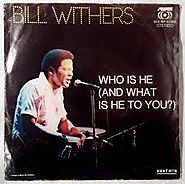
From his most successful album, ‘Still Bill,’ this cleverly worded confrontation of sorts was best characterized by three things: its lack of a hook (the song had no chorus), its musical foundation - a repeated 5-note bass riff throughout, and the hard-to-fathom tale of Bill’s paranoia over potentially losing his woman to a man they passed on the street and whom he suspected she knew.
Sampled on several hip-hop records and covered famously by acts like Meshell Ndegeocello, who took it to No. 1 on the dance/disco chart in 1996, this may also be the only pop song to repeatedly - and quite effectively - use the word “dadgummit” in its lyrics (and make it a four-syllable word every time).
It’s certainly the most memorable song to do so.
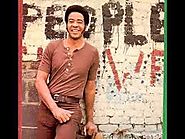
Upbeat and funky, this was probably Bill Withers at his most confident and lighthearted, with a celebration of the feelings and reaction one gets when he’s engaged in the simple act of kissing: head-thumping joy, heartbeat-skipping euphoria, and a blood rush that can only can be explained one way (Bill leaves it to the imagination, like all great songwriters did back in the day).
The whistle at the end as the song fades only brings home the point even further, signaling that a happy ending is indeed in sight. “Kissing” reached No. 12 R&B and No. 31 pop in 1973.
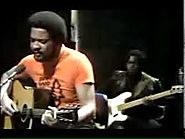
It might be hard to believe that a man who was still with us in 2020 was only two generations removed from slavery. But such was the case for Withers, whose maternal grandfather was born into slavery in 1855. His maternal grandmother, born 13 years later, was the subject of this song from his first album.
“Grandma’s Hands” was relatable in that it depicted the nurturing spirit of Withers’ grandmother - and by extension all of ours - even going as far as to invoke scorn for the mother (“Mattie, don’t you whip that boy, what you want to spank him for?), knowing full well that grandma probably laid a hand or two on Mattie back in her day.
“Grandma’s Hands” reached the top 20 on the R&B chart and just missed the pop top 40, peaking at No. 42 on the Hot 100. It was later prominently sampled in a No. 1 smash from 1996, “No Diggity” by BLACKstreet ft. Teddy Riley & Dr. Dre.
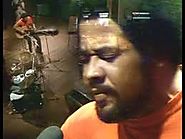
A somewhat obscure Vietnam War protest song written and recorded by Withers in 1973, from his ‘Live at Carnegie Hall’ album. The 6:44 live version begins with a two-minute narration about Bill’s encounter with a returning veteran who lost his right arm in combat. Withers sang from the perspective of the soldier, who couldn’t write left-handed and needed someone else to pen a letter home explaining his plight as well as a plea for his brother’s deferment, among other things.
Lending this bluesy track even more authenticity was Withers’ own 9-year stint in the military, during which he was luckily spared any of the fate he so eloquently sang about.
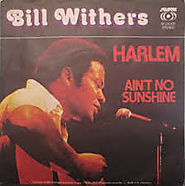
From Withers’ first album, ‘Just As I Am,’ came this strummy ode to the historic New York neighborhood that was a far cry from the small West Virginia town where Bill grew up.
Musically, the song is characterized by its modulation through five key changes in just over two minutes, using a technique employed in other pop songs like The Supremes’ “I Hear A Symphony” six years earlier. By the time Withers settles into the final key, the tune is a full-blown jubilee befitting the area whose name it bears.
“Harlem” is the track that opened the album, and Sussex Records - the label to which Withers was signed - released it as the first single, but its B-side got more attention from radio programmers and it was that song, “Ain’t No Sunshine,” which became the hit, peaking at No. 3 in September 1971.
Ironically, one of the songs that kept “Sunshine” from No. 1 was another tune about the NYC neighborhood: “Spanish Harlem” by the Queen of Soul, Aretha Franklin, which was perched at No. 2 on the chart - right above Withers’ single.
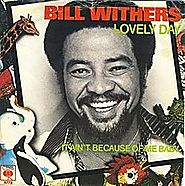
By 1977, Withers’ career had hit a roadblock.
After the success of his first albums with Sussex Records in the early ‘70s, the label folded and Withers signed with the more stable Columbia Records. His first two albums there promptly flopped, but his third - ‘Menagerie’ - yielded what became an unlikely signature tune, “Lovely Day.”
The song is personified by its simplicity and beauty, understated both in its instrumentation and its vocals - at least until Withers unleashes during the third and final chorus. The music never builds to a crescendo, but it’s Bill who takes it over the top with an octave-changing refrain of the title line and a record-setting sustained note of 18 seconds as he sings “Daaaaaaaaaaaaaaaaaay” towards the end. In the days before auto-tune, that was some very impressive stuff, and is still believed to be the longest held note on a top-40 single ever.
“Lovely Day” peaked at No. 6 R&B and rejuvenated Withers’ pop career, reaching No. 30 on the Hot 100 in early 1978.
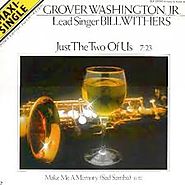
This heartfelt jazz-pop classic made its Hot 100 chart début on Valentines Day 1981, along with other love-inspired songs by Sheena Easton (“Morning Train”), Smokey Robinson (“Being With You”), Champaign (“How ‘Bout Us”), and the Whispers (“It’s a Love Thing”). Each one of those romantic hits made it to the top 40, but the songs by Easton and Robinson factored heavily into the chart performance of “Just The Two of Us.”
The three songs (“Train,” “Being” and “Just”) jostled for position as they climbed the list, with the threesome occupying the top three positions the first two weeks in May. The unlikeliest of those successes was “Just The Two Of Us,” the song included on a jazz fusion album (the Grammy-winning classic ’Winelight’) by saxophonist Grover Washington, Jr. and featuring the distinctive vocals of Withers, who hadn’t had a hit since “Lovely Day” three years earlier. That it was a No. 2 smash only prevented from No. 1 by “Morning Train” and later by the year’s biggest hit, “Bette Davis Eyes” by Kim Carnes, spoke to its undeniable appeal.
“Just The Two Of Us” ultimately won Withers a 1982 Grammy for Best R&B song.

Bill Withers’ biggest hit, and usually the first one we all think of upon hearing his name, “Lean On Me” has taken on new life in the COVID-19 era, as many people have turned to the 1972 No. 1 smash as a source of comfort in these times of self-isolation and fear.
But what’s astonishing about the song’s history is that Withers’ original take was shown no Grammy love during its initial eligibility, not even receiving a nomination for the 1973 ceremony. Instead, Withers received a Grammy for writing the song after the R&B/dance group Club Nouveau took a cover of it to No. 1 on the pop chart 15 years later.
The chart-topping success of both the original and the remake made “Lean on Me” one of only nine songs in Hot 100 history to reach No. 1 twice by different artists, and the song has since been given Grammy Hall of Fame recognition, plus it ranks at No. 205 among Rolling Stone magazine’s 500 greatest songs of all time. Not a bad overall showing for a simple tune about friendship.
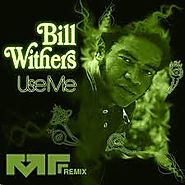
Known for its unique bass signature, which repeats throughout, “Use Me” was the second single released from Withers’ second album, ‘Still Bill.’ On top of that, it was his second-biggest solo hit and it peaked at No. 2 (for two weeks) in 1972 on two charts: pop and R&B.
Even more interesting than the numerology surrounding the No. 2 was the fact that a song about the joys of being “used” by his significant other - presumably a girlfriend - was climbing the charts during a time when women were scarce at top-40 radio, giving the song an even more misogynistic context than it ever intended. In fact, the week that “Use Me” climbed into the Top 20 of Billboard’s Hot 100 (9/23/72), there weren’t even two women in the entire top 40. There were NO solo female artists there and only one song that included a woman, by Sister Rose - billed with her siblings the Cornelius Brothers - at No. 38. Thank goodness times have changed.
By the way, the two songs by men that held “Use Me” from No. 1: Michael Jackson’s “Ben” - a boy’s ode to a rat - and Chuck Berry’s “My Ding-a-Ling,” a middle-aged guy’s tribute to his man-parts (we think).
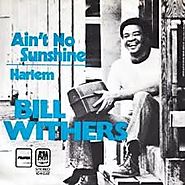
This is the song that started it all for the singer out of Slab Fork, WV, a town whose last census numbers cited a population of only 200 people.
Clocking in at just two minutes and four seconds, this classic Withers tune was short even by 1971 pop song standards. Fourteen of those seconds are taken up by Bill famously repeating the phrase “I know” a total of 26 times midway through the song.
The singer/songwriter later said in interviews that he had intended to go back and replace that part with actual lyrics, but the song’s producer - Booker T. Jones of Booker T. & the MG’s - convinced Withers to leave it in. Smart decision in hindsight.
The song became Withers’ first of three million-sellers and peaked at No. 3 on Billboard’s Hot 100.
“Ain’t No Sunshine” is an understated tune indeed, but not one that is short on accolades. It is a classic by many measures, including being in the Grammy Hall of Fame and ranking at No. 285 in Rolling Stone magazine’s list of the 500 Greatest Songs of All Time.

Hi, I'm DJ Rob, owner and author of the music blogsite djrobblog.com. I live in Chicago, IL and have been doing the blogsite since January 2015. It features articles about music news, history and trivia - both old and new. The features I enjoy doing the most are my djroblists. I've done dozens of lists ranking everything from blue-eyed soul singers to Prince's greatest songs. I only recently started converting them to listly to increase interaction with my readers. Take some time to enjoy them and let me know what you think! And check out djrobblog.com when you can!